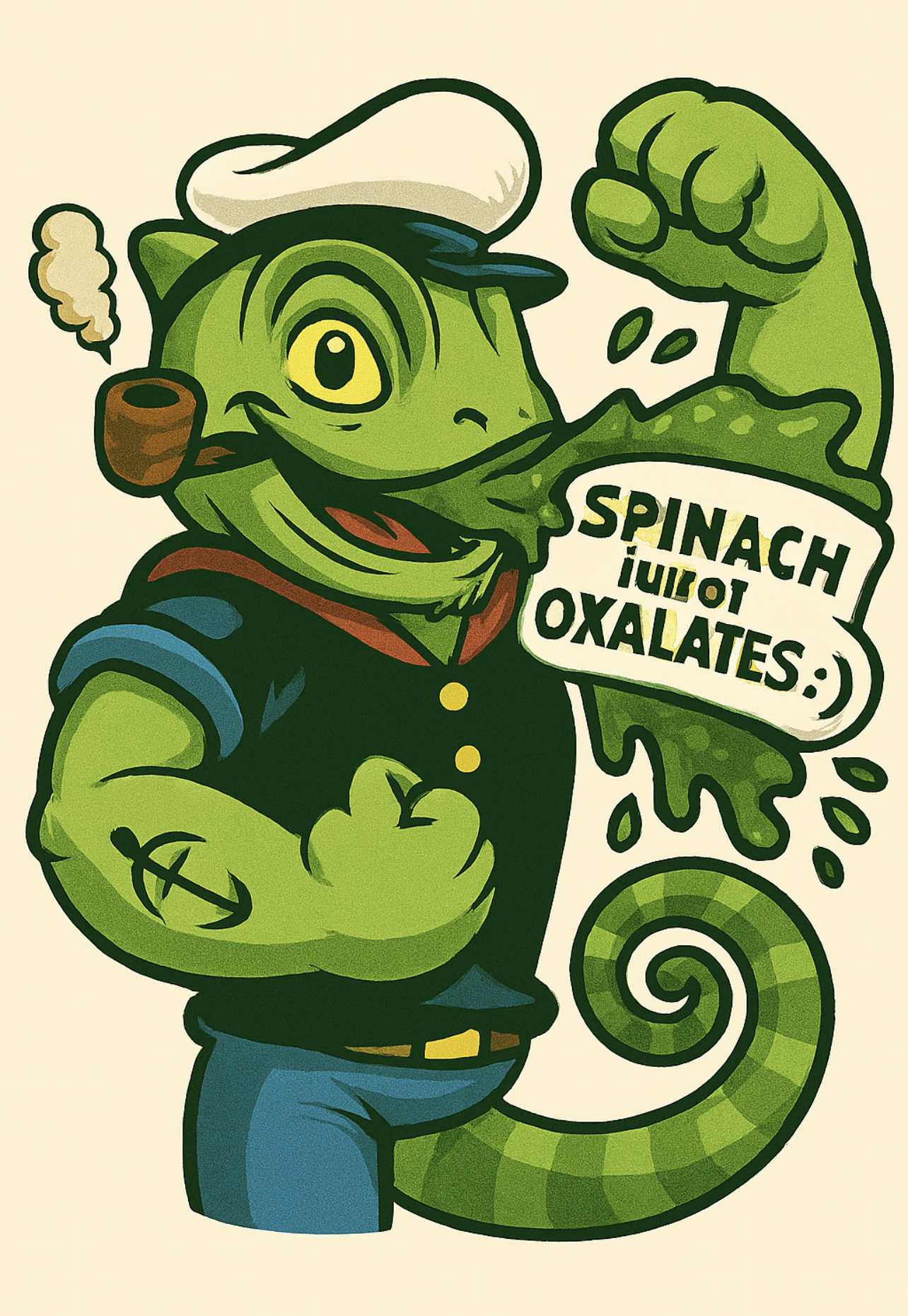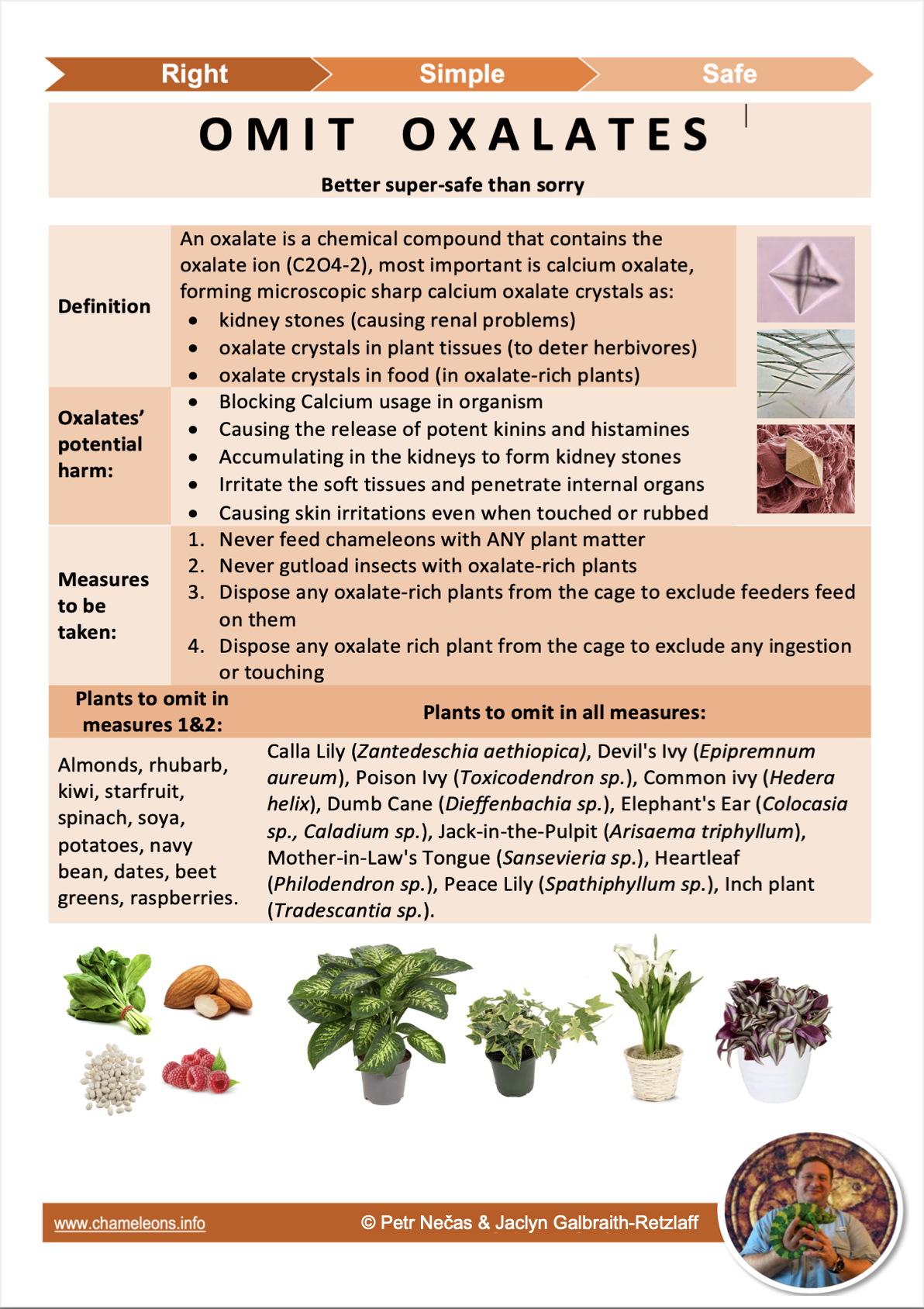Oxalates and Chameleons: Better Super-Safe Than Sorry?

What happens when chameleons nibble on plants that are technically toxic — like pothos or peace lilies? These plants contain calcium oxalate crystals, which are known to cause irritation, kidney issues, and other symptoms in mammals. So, are chameleons equipped to handle them, or could this be slowly harming them?
What Are Oxalates?
Oxalates are chemical compounds (C₂O₄²⁻) that bind with calcium to form microscopic sharp crystals. These crystals can:
Cause kidney stones and tissue damage
Irritate the mouth, throat, and skin
Block calcium absorption
Accumulate in organs
Trigger vomiting, diarrhea, and burning sensations
They're found in many common plants — including rhubarb, spinach, Swiss chard, starfruit, and pothos — and are especially concentrated in certain ornamental species like dumb cane, elephant ear, and philodendron.
Should We Be Concerned?
From a safety-first perspective, the advice is simple: omit oxalate-rich plants from enclosures. Use gloves when handling them, don't feed them to animals, and dispose of them properly. This is the core message of the visual guide "OMIT OXALATES: Better super-safe than sorry", which outlines the risks and lists dozens of plants to avoid or measure carefully.
But here's where it gets interesting.
Chameleons and Oxalates: A Paradox?
Despite the warnings, many long-lived veiled (Yemen) chameleons — some over 12 years old — have grazed on oxalate-rich plants like Pothos, Epipremnum without apparent harm. I note that these chameleons were kept in enclosures with such plants and regularly nibbled on them. So why no symptoms?
One theory: chameleons don't digest plant matter efficiently. That means the oxalates may remain locked inside undigested plant fragments and pass through the digestive system without being absorbed and without any interaction with the body. In other words, the crystals are physically present but biologically inert.

Second option: they have developed a certain resistance to the Oxalates, so that they do not cause notable harm to chameleons. Research has shown that iguanid lizards, such as the green iguana (Iguana iguana), possess gut microbiota capable of degrading oxalates, allowing them to safely consume high-oxalate plants like spinach and hibiscus. These adaptations include oxalate-degrading bacteria and specialised hind-gut fermentation processes. Chameleons do not ingest oxalates as a part of their food, but as a part of indigestible roughage, but this anyway causes their exposure to oxalates, so similar evolutionary response is possible like that of vegetarian lizards.
Final Thoughts
There's no hard evidence proving oxalates are harmless to chameleons — but there's also no clear evidence of harm. It is hard to give you evidence of absence of constraints. So, for cautious keepers, the best approach is still: better super-safe than sorry.
If you want to eliminate any risk, stick to low-oxalate plants. Artificial plastic plants do not contain oxalates but they do not represent an option due to their harmfulness and toxicity.
But if your chameleon occasionally grazes on pothos and seems healthy, you're not alone — and you're not necessarily doing anything wrong.